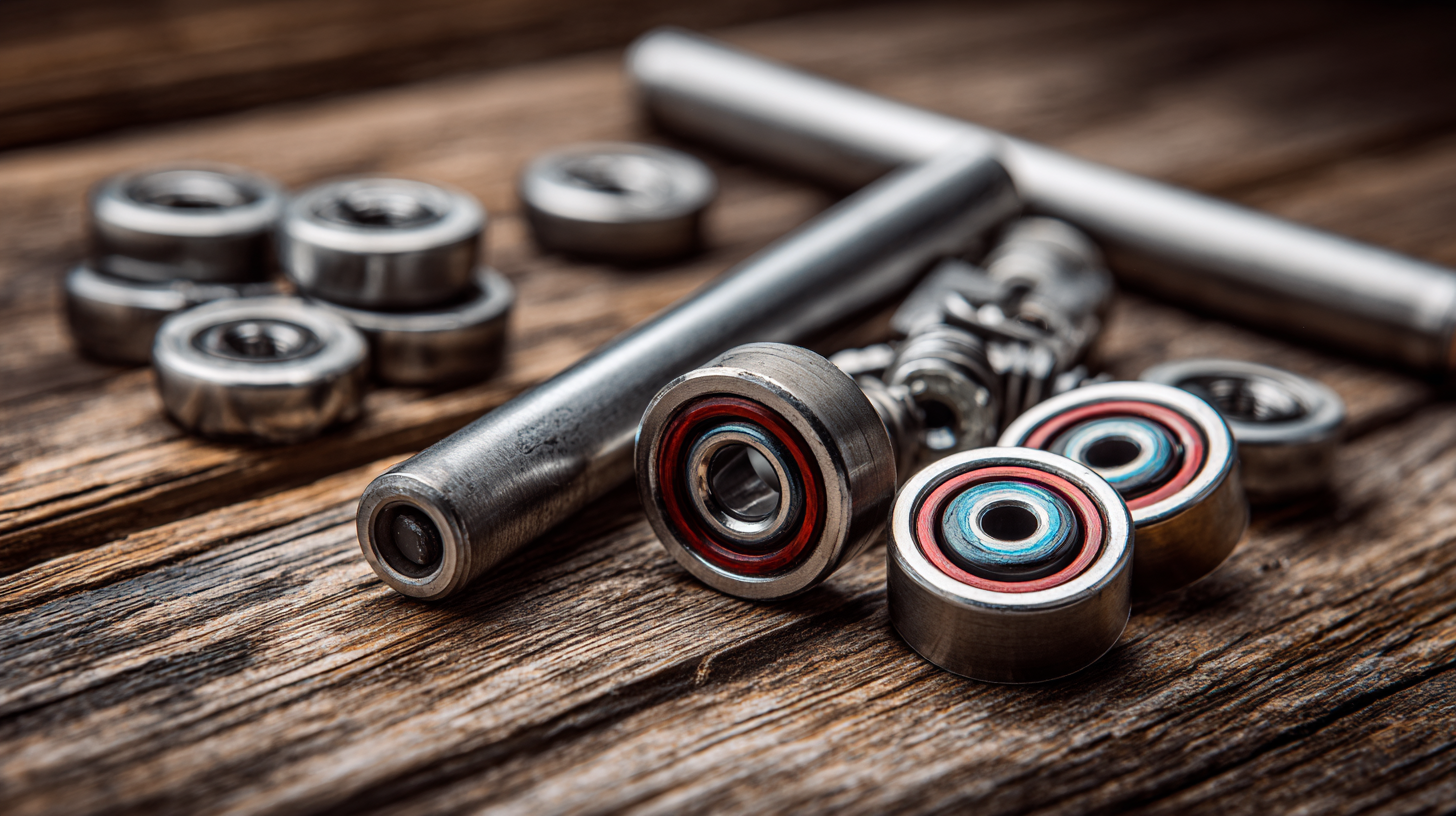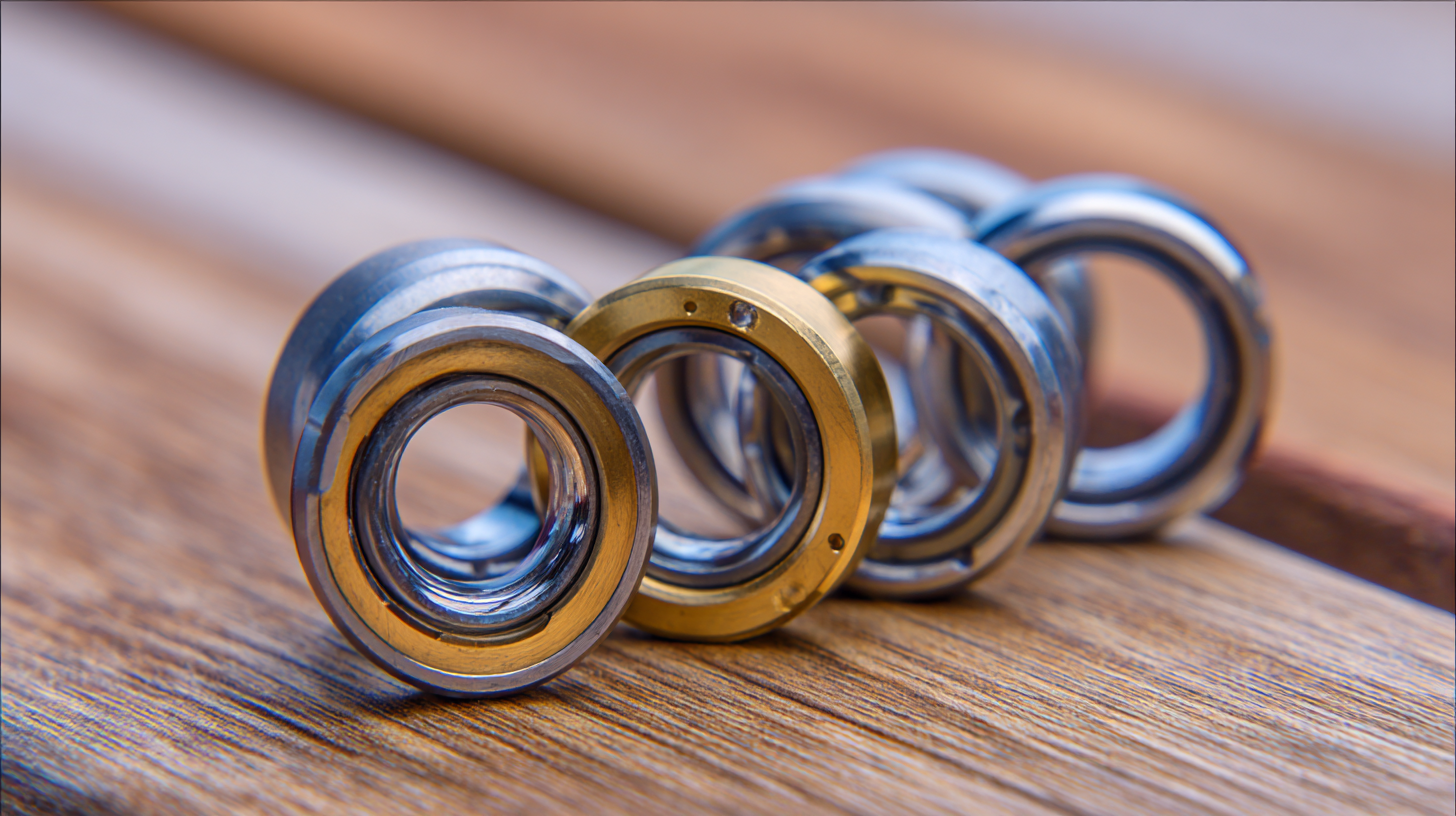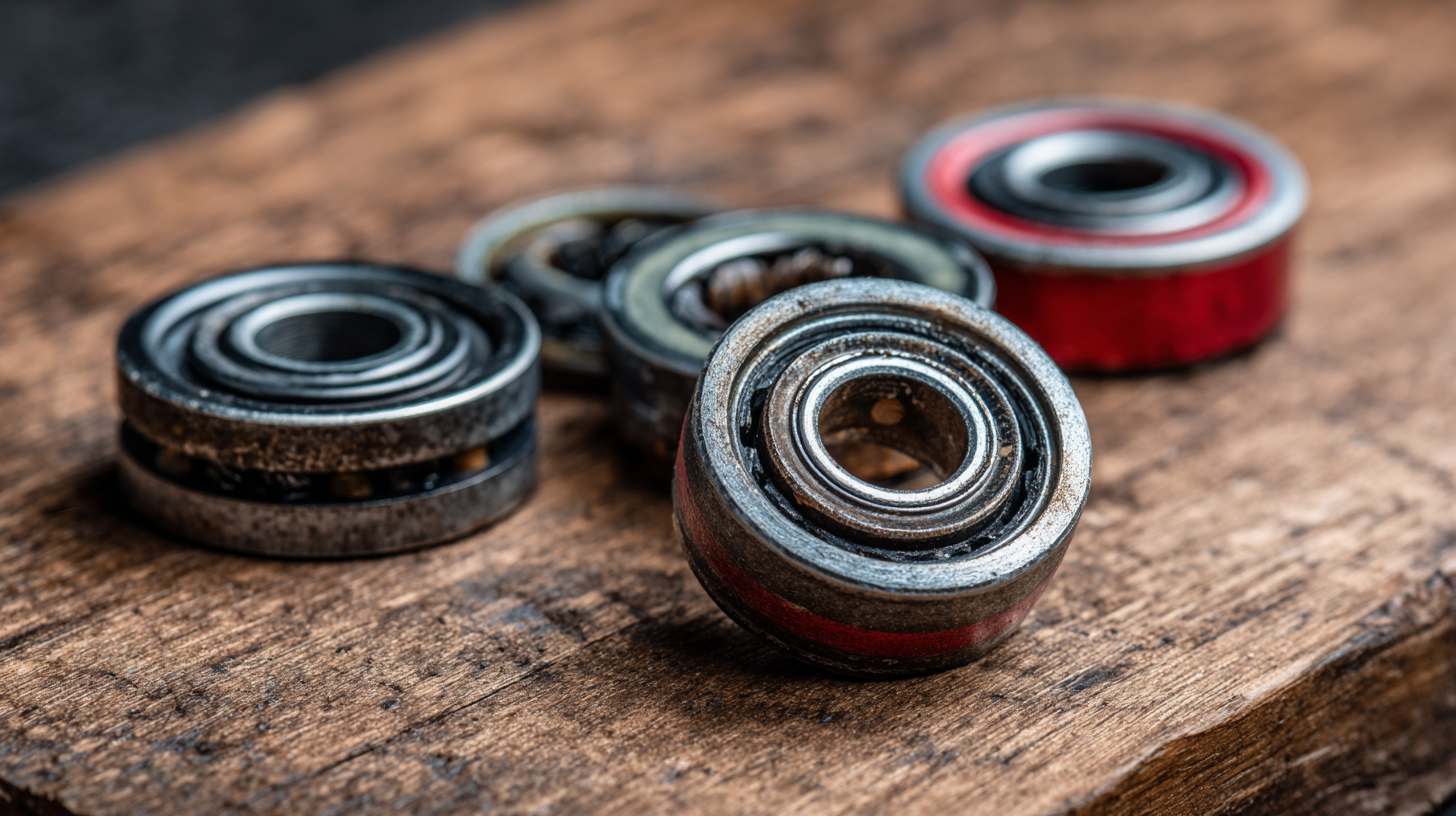5 Essential Tips for Choosing the Best Sealed Bearings
In the realm of industrial machinery and automotive applications, sealed bearings play a crucial role in enhancing performance and longevity. A report by the Precision Bearing Institute indicates that the global market for bearings is projected to reach $113 billion by 2025, with a significant portion attributed to the growing demand for sealed bearings due to their ability to minimize contamination and maintenance needs.

As industries strive for greater efficiency and reduced downtime, understanding the intricacies involved in choosing the right sealed bearings becomes essential. This blog will provide five essential tips that will guide professionals in selecting the most suitable sealed bearings for their specific applications, ensuring optimal functionality and durability in an increasingly competitive landscape.
Understanding the Importance of Sealed Bearings in Modern Industries
 Sealed bearings play a crucial role in modern industries by enhancing performance and reducing maintenance costs. According to a recent report by Research and Markets, the global bearing market is projected to reach $115 billion by 2025, with sealed bearings accounting for a significant share due to their enhanced durability and resistance to contaminants. In environments such as automotive, aerospace, and manufacturing, where exposure to dust, moisture, and debris is common, sealed bearings ensure optimal functionality and longevity.
Sealed bearings play a crucial role in modern industries by enhancing performance and reducing maintenance costs. According to a recent report by Research and Markets, the global bearing market is projected to reach $115 billion by 2025, with sealed bearings accounting for a significant share due to their enhanced durability and resistance to contaminants. In environments such as automotive, aerospace, and manufacturing, where exposure to dust, moisture, and debris is common, sealed bearings ensure optimal functionality and longevity.
Moreover, the efficiency of sealed bearings can lead to substantial energy savings. A study from the National Renewable Energy Laboratory (NREL) indicates that properly sealed bearings can improve energy efficiency by up to 15%. This not only contributes to cost reduction in operational settings but also aligns with sustainability goals, as less energy consumption means a smaller carbon footprint. As industries increasingly turn toward solutions that offer both performance and environmental benefits, the importance of choosing the right sealed bearings becomes evident, ensuring businesses remain competitive in a rapidly evolving market.
Key Factors to Consider When Selecting Sealed Bearings
When selecting sealed bearings, several key factors come into play to ensure optimal performance and longevity. One of the primary considerations is the bearing material. For example, according to a recent industry report by the International Journal of Precision Engineering and Manufacturing, bearings made from high-quality stainless steel exhibit greater resistance to corrosion and fatigue, making them ideal for harsh environments. Additionally, the choice between metal and polymer seals can significantly affect performance. Metal seals typically offer better durability, while polymer seals provide improved flexibility and lower friction.
Another critical factor is the application environment. Sealed bearings used in high-temperature settings should be rated accordingly, as thermal properties greatly influence their lifespan and efficiency. A study published in the Journal of Mechanical Engineering highlights that bearings operating above 150°C should feature specialized lubricants to prevent degradation.
Finally, it is essential to consider the load and speed conditions of the intended application. For high-speed applications, deep groove ball bearings are often recommended for their ability to accommodate radial loads and some axial loads effectively. Ultimately, selecting the right sealed bearing involves a careful assessment of these factors to ensure performance and reliability tailored to specific operational demands.
5 Essential Tips for Choosing the Best Sealed Bearings
Comparative Analysis of Different Materials Used in Sealed Bearings
When selecting sealed bearings, the choice of materials can significantly influence performance, durability, and cost-effectiveness. The commonly used materials for sealed bearings include steel, stainless steel, ceramic, and composite materials. According to a report by the International Journal of Precision Engineering and Manufacturing, steel bearings are favored for their high load capacity and cost efficiency, making them ideal for industrial applications. However, they may suffer from corrosion and wear under harsh environmental conditions.

Stainless steel bearings, while offering increased resistance to corrosion, also come at a higher price point. The bearing industry has witnessed a substantial rise in demand for stainless steel bearings, attributed to their suitability for marine and food processing applications where hygiene is crucial. For instance, a market analysis from Research and Markets anticipates a compound annual growth rate (CAGR) of 4.5% for stainless steel bearings over the next five years.
On the other hand, ceramic bearings are gaining traction within high-speed and high-temperature applications due to their lightweight nature and superior wear resistance. A study published by the Society of Tribologists and Lubrication Engineers found that ceramic bearings have a longer lifespan, often exceeding that of their metal counterparts by 5 to 10 times under comparable conditions. Ultimately, understanding the specific properties of these materials will guide engineers and purchasing managers in making informed decisions tailored to their unique operational needs.
Future Trends in Sealed Bearing Technologies for 2025 and Beyond
As we look toward 2025 and beyond, sealed bearing technologies are set to experience significant advancements driven by innovations in materials, design, and manufacturing processes. One of the most promising trends is the development of high-performance materials that enhance the durability and efficiency of sealed bearings. These materials will not only improve resistance to wear and corrosion but also allow bearings to operate effectively in extreme environmental conditions, which is crucial for industries such as aerospace and renewable energy.
Additionally, the integration of smart technologies into sealed bearing systems will likely become a reality. By incorporating sensors and IoT capabilities, manufacturers can monitor bearing performance in real-time, leading to predictive maintenance and reduced downtime. This proactive approach will enable companies to address potential issues before they escalate, optimizing operational efficiency.
As industries continue to prioritize sustainability, we can also expect sealed bearings to become more environmentally friendly, with a focus on recyclable materials and energy-efficient production processes. The future of sealed bearings promises to blend cutting-edge technology with sustainable practices, shaping a new era of innovation.
Market Projections for Sealed Bearings: Opportunities and Challenges Ahead
The market for sealed bearings is expected to experience significant growth in the coming years, driven by advancements in technology and increasing demand from various industries. Opportunities abound, particularly in sectors like automotive, aerospace, and heavy machinery, where reliable and durable components are crucial. However, manufacturers also face challenges, including rising raw material costs and stringent regulations regarding environmental impact.
When choosing the best sealed bearings, it’s essential to consider material compatibility. Different applications require specific materials to withstand harsh environments. Another crucial tip is to assess the load capacity and speed ratings of the bearings to ensure they meet operational demands. Finally, understanding the sealing mechanisms can greatly influence durability and performance; options like rubber seals or metal shields can provide varying levels of protection and maintenance needs.
By keeping these tips in mind while navigating the opportunities and challenges in the sealed bearing market, businesses can make informed decisions that enhance their operational efficiency. The right choice of bearings not only improves performance but also potentially reduces long-term costs associated with maintenance and replacements.
5 Essential Tips for Choosing the Best Sealed Bearings - Market Projections for Sealed Bearings: Opportunities and Challenges Ahead
| Tip | Description | Market Growth (2023-2028) | Key Challenges |
|---|---|---|---|
| 1. Material Quality | Select bearings made of high-quality materials for durability. | 5% CAGR | Material sourcing challenges |
| 2. Sealing Type | Understand different sealing types based on application needs. | 4% CAGR | Compatibility with operating environments |
| 3. Load Capacity | Evaluate the load capacity to ensure proper performance. | 6% CAGR | Rising demand in high-load applications |
| 4. Noise Level | Select low-noise bearings for quiet operations. | 3% CAGR | Noise regulations in various industries |
| 5. Cost Effectiveness | Balance between quality and cost for better ROI. | 5% CAGR | Market price fluctuations |